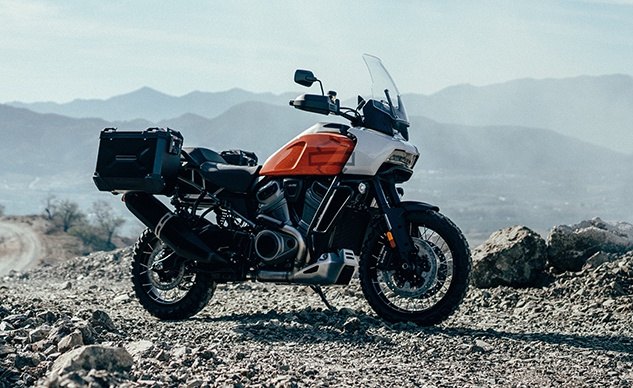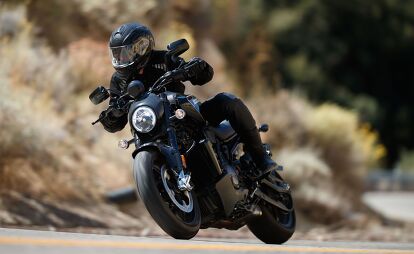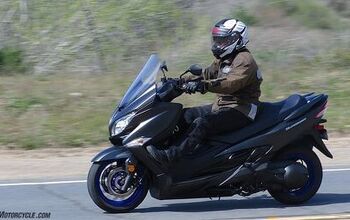Harley-Davidson Announces Q1 2020 Results and New Strategic Plan

Harley-Davidson reported its first quarter 2020 results, announced actions to address the impact of COVID-19 and outlined a new strategic plan for the company, moving forward.
It comes to no surprise that the Q1 numbers were bad, considering the recent departures of former Chief Executive Officer Michael Levatich and chief operating officer Michelle Kumbier, plus an attempted proxy fight with minor shareholder Impala Asset Management. And that’s all before the full impact of COVID-19 will really take hold.
For those keeping score, Harley-Davidson says it sold 40,439 motorcycles over the quarter, down 17.7% from the 49,151 models sold in the same quarter last year. International sales saw a 20.7% increase, while U.S. sales, which represents the bulk of Harley’s market, were down 15.5%. According to Harley-Davidson, U.S. retail sales were actually up 6.6% until mid-March when the pandemic crisis began to impact, well, everything, but especially motorcycle production.
Revenue was down from all segments, including motorcycle sales (-6.8%), resulting in a first quarter operating income of $84.6 million (-22.0%). Harley-Davidson Financial Services also saw a hit, with an operating income of $22.9 million (-60.9%) despite a 5.1% increase in revenue, due to an “increase in the provision for loan losses related to the impact of the COVID-19 crisis.”
Addressing the pandemic, Harley-Davidson outlined measures to address its impact and prepare for recovery. The measures involve reduced capital spending (including a freeze on hiring and bonuses plus temporary salary reductions) and the retiming of new product launches; maintaining liquidity; supporting dealers; and continuing to take steps to protect the safety and health of employees. Harley-Davidson says it has restarted some manufacturing and will gradually ease work-at-home restrictions at the appropriate time.
Harley-Davidson also announced a new five-year strategic plan it calls “The Rewire” that will modify its current “More Roads” plan. The new plan will be fully fleshed out in the coming months, but the overall aims appears to be refocusing on the company’s core strengths and prioritizing its strongest markets.
That sounds to us like Harley-Davidson will retreat back to its core products, that is, cruisers and heavyweight tourers. Harley says it remains committed to entering the adventure touring, streetfighter and electric motorcycles, so the Pan America and Bronx will likely still be coming out, just later than originally scheduled, while the Livewire remains a core part of H-D’s lineup. Practically speaking, Harley-Davidson has already invested enough development and marketing capital into these products, there’s little choice but to proceed, but with more modest and more achievable targets. What’s less solid is the fate of Harley-Davidson’s next line of future products, including smaller electric models, electric bicycles, and the new liquid-cooled Custom models.
In focusing on its strongest, most profitable markets, we may see Harley-Davidson scaling back its goals for the European market. The new models and the liquid-cooled Revolution Max platform were a big part of the company’s European strategy, but Harley-Davidson still had a lot of work to do on its existing lineup, as most of its current models do not meet Euro 5 regulations that are supposed to be mandatory by the end of the year. Several manufacturers are petitioning for a delay on that front, and Harley-Davidson will likely be backing those efforts.
The Rewire plan also calls for adjustments in the company’s structure to be more nimble and able to adjust to new realities of the market once the COVID-19 crisis has passed. Part of that will also include moving the timing of its product launches, traditionally in late August and early September, to better match up with the start of the riding season.
Further details to the Rewire plan will be released in the second quarter.

Dennis has been a part of the Motorcycle.com team since 2008, and through his tenure, has developed a firm grasp of industry trends, and a solid sense of what's to come. A bloodhound when it comes to tracking information on new motorcycles, if there's a new model on the horizon, you'll probably hear about it from him first.
More by Dennis Chung


































Comments
Join the conversation
I used to own a sportster and an Ultra Classic. They were nice for what they were but I rode a R1200RT and never looked back. BMW's have modern features that improve the rider experience, isn't focused on radios and paint. There's a ton of great bikes for a number of riders. I have had several BMW's, including a R12GS and the bikes most appealing to me are the KTM 390ADV, '20 Africa twin, Enfield 650 GT, and Svartpilen, which is just a personal short list. I'm getting to be in the demographic that's shrinking and I'm looking at other manufactures. HD is betting on a market that's no longer there and they aren't offering the products the boomer and Genx market are moving to, Smaller bikes for casual riding. I'll be down to 1 bike in 5 years. It won't be a Harley.
Delaying the PanAm is not a good strategy. I would be interested in a PanAm just because there are 8 HD dealers in my state alone (we lost the only BMW dealer). I wish HD success and I think the PanAm and Bronx would nice bikes but there are already other bikes in the class.
They are like steam engine manufactures thinking petrol engines are a fad and stinking to their core products.
https://uploads.disquscdn.c...